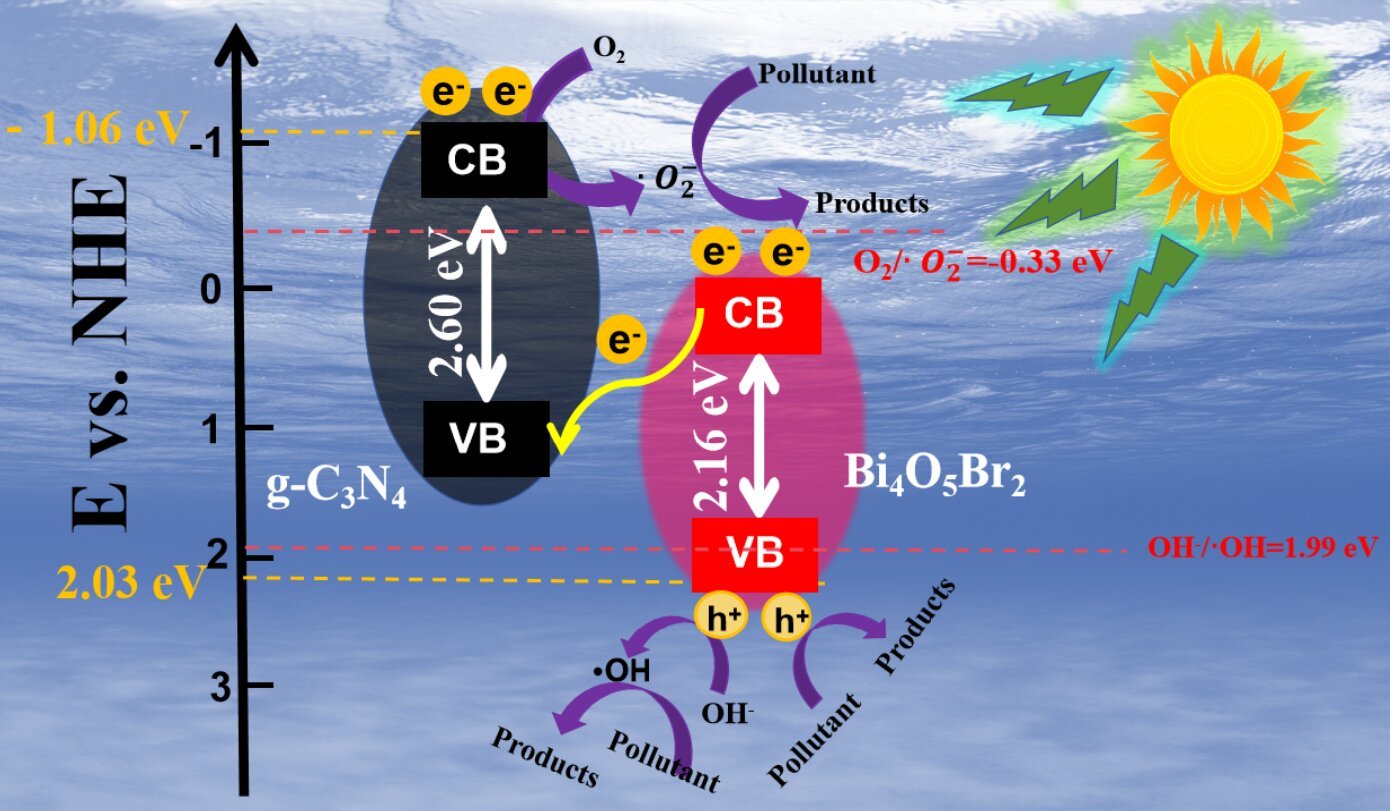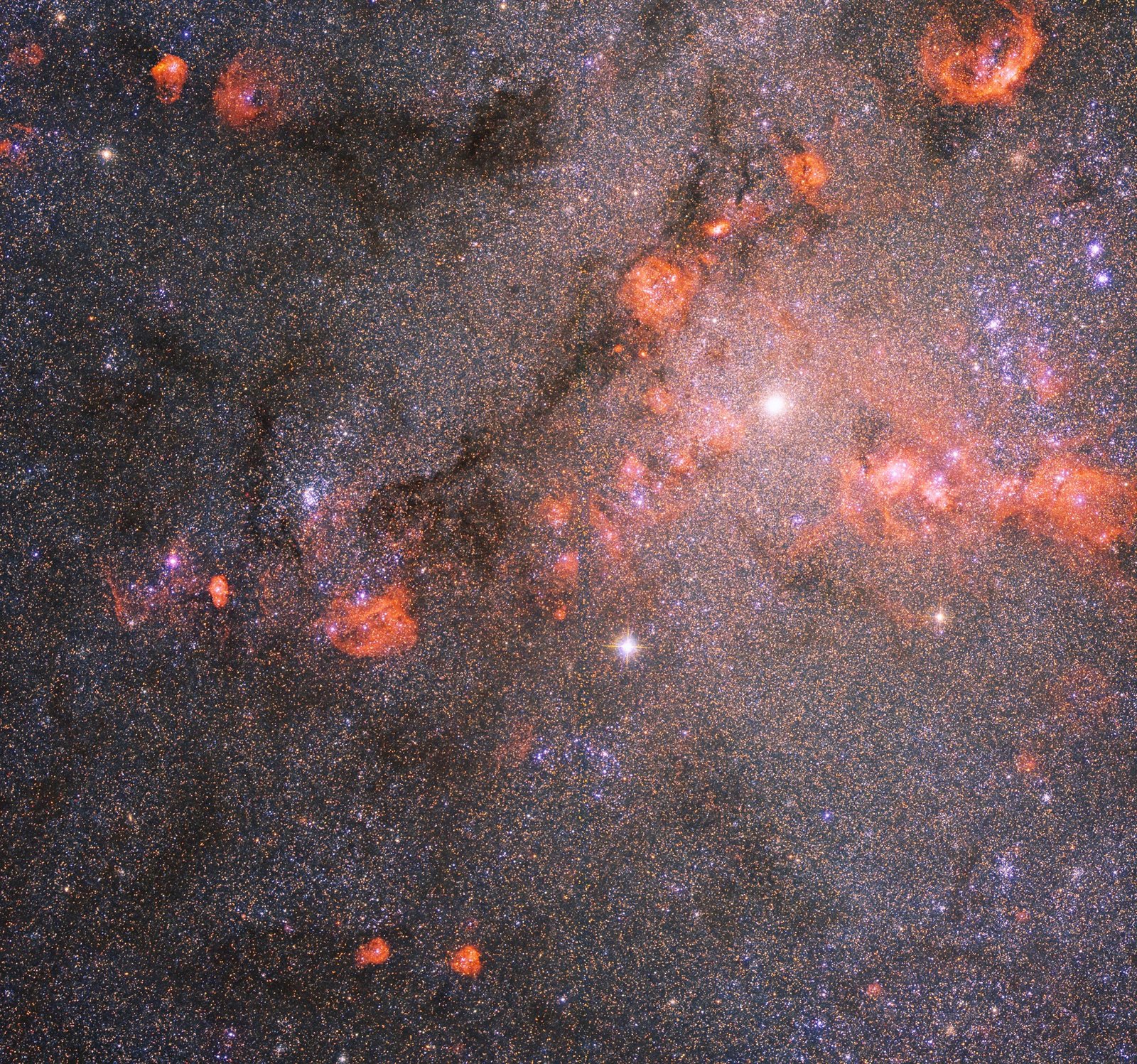Photocatalysts can effectively utilize solar energy to degrade organic pollutants, presenting significant application potential in water treatment. However, the ultrafast recombination of photogenerated carriers has severely limited the performance of photocatalysts.
Recently, a team of scientists has constructed a novel photocatalyst with an optimized g-C3N4/Bi4O5Br2 Z-type heterostructure that enhances the photogenerated charge separation and significantly boosts the generation of reactive species responsible for the degradation process.
The degradation efficiency of bisphenol A (BPA) under visible light was close to 98%, and complete degradation of rhodamine B (RhB) was achieved, with a performance exceeding the existing benchmarks in the field. Their research results were published in the journal Industrial Chemistry & Materials (ICM) on 24 September 2024.
Photocatalysts show great potential for solving environmental challenges. However, its catalytic performance is severely restricted by the inefficient separation of photogenerated carriers and limited visible light absorption capacity. To overcome these challenges, Z-type heterojunction photocatalysts have been widely utilized to enhance the degradation performance of pollutants by facilitating the transfer of photogenerated electrons.
Liu and coworkers demonstrated that a blend of bismuth oxyhalide and graphene was able to achieve efficient pollutant degradation in the visible through Z-type heterojunctions, enhanced electron transfer and reduced charge complexation. These composites have been used to target pollutants such as BPA and RhB, achieving significant degradation efficiencies.
BPA and RhB are two common chemicals widely used in plastics, resins, dyes and other industries. Despite their wide range of applications, both pose potential hazards to the environment and human health. Contamination of BPA in water bodies leads to its accumulation in aquatic organisms, disrupting the ecological balance and potentially affecting the reproduction and growth processes of plants and animals, while contamination of RhB may lead to toxicity of aquatic organisms, causing mutations, reproduction problems, and growth inhibition. Therefore, it is particularly important to develop efficient and low-cost photocatalysts to degrade these pollutants.
The researchers successfully constructed a Z-scheme heterojunction g-C3N4/Bi4O5Br2 photocatalyst for the photocatalytic degradation of BPA and RhB. The precise band alignment of this composite not only extends its light response range and enhances redox capability, but also improves the separation efficiency of photogenerated charges and significantly boosts the production of dominant reactive species. CN/BOB heterostructures with different mass ratios were prepared by a simple hydrothermal synthesis and post-thermal treatment process.
The optimized CN/BOB-16 catalysts exhibited excellent photocatalytic performance for BPA and RhB under visible light, with the degradation efficiency of BPA approaching 98%, while RhB was completely degraded within 80 min. These results are about 1.3 times higher than the performance of g-C3N4 or Bi4O5Br2 alone, surpassing the performance recorded in the recent literature.
In situ, X-ray photoelectron spectroscopy (in situ XPS) and ultraviolet photoelectron spectroscopy (UPS) experiments provided strong evidence for the energy band arrangement of the Z-scheme heterojunction and revealed the photogenerated electron transfer process. The photogenerated electrons migrate from Bi4O5Br2 to g-C3N4 under the influence of the built-in electric field, while the holes remain in Bi4O5Br2. This efficient spatial separation within the Z-type heterostructure maximizes photocatalytic efficiency.
Through radical trapping experiments and electron paramagnetic resonance (EPR) spectroscopy, the researchers confirmed the role of h+ and O2- as the main active radicals in the photocatalytic reaction. In addition, through first-principles calculations, the researchers verified the experimental results and pointed out that the Z-type heterostructures played a key role in generating active species and improving the degradation efficiency.
The study not only provides insights into the electron transfer mechanism of CN/BOB heterostructures, but also further confirms the advantages of Z-type heterostructures in reducing electron-hole complexation and increasing carrier lifetime through various spectroscopic and electrochemical techniques. The conclusions of the article emphasize the potential of the CN/BOB-16 heterostructure for environmental remediation applications and provide an important theoretical basis and experimental method for the development of novel photocatalysts.
The next step involves designing more efficient Z-type heterojunction photocatalysts for the degradation of various organic pollutants, conducting practical environmental remediation experiments, and establishing relevant theoretical models to gain deeper insights into their electron transfer mechanisms. Through these efforts, the researchers aim to develop low-cost, high-performance, stable photocatalysts and provide innovative concepts and technical support for sustainable environmental management.
More information:
Xinghui Liu et al, Enhanced pollutant photodegradation activity of graphitic carbon nitride on via bismuth oxyhalide graphene hybridization and the mechanism study, Industrial Chemistry & Materials (2024). DOI: 10.1039/D4IM00105B
Provided by
Industrial Chemistry & Materials
Citation:
Novel photocatalyst achieves 98% degradation efficiency of BPA under visible light (2024, October 15)
retrieved 15 October 2024
from https://phys.org/news/2024-10-photocatalyst-degradation-efficiency-bpa-visible.html
This document is subject to copyright. Apart from any fair dealing for the purpose of private study or research, no
part may be reproduced without the written permission. The content is provided for information purposes only.




